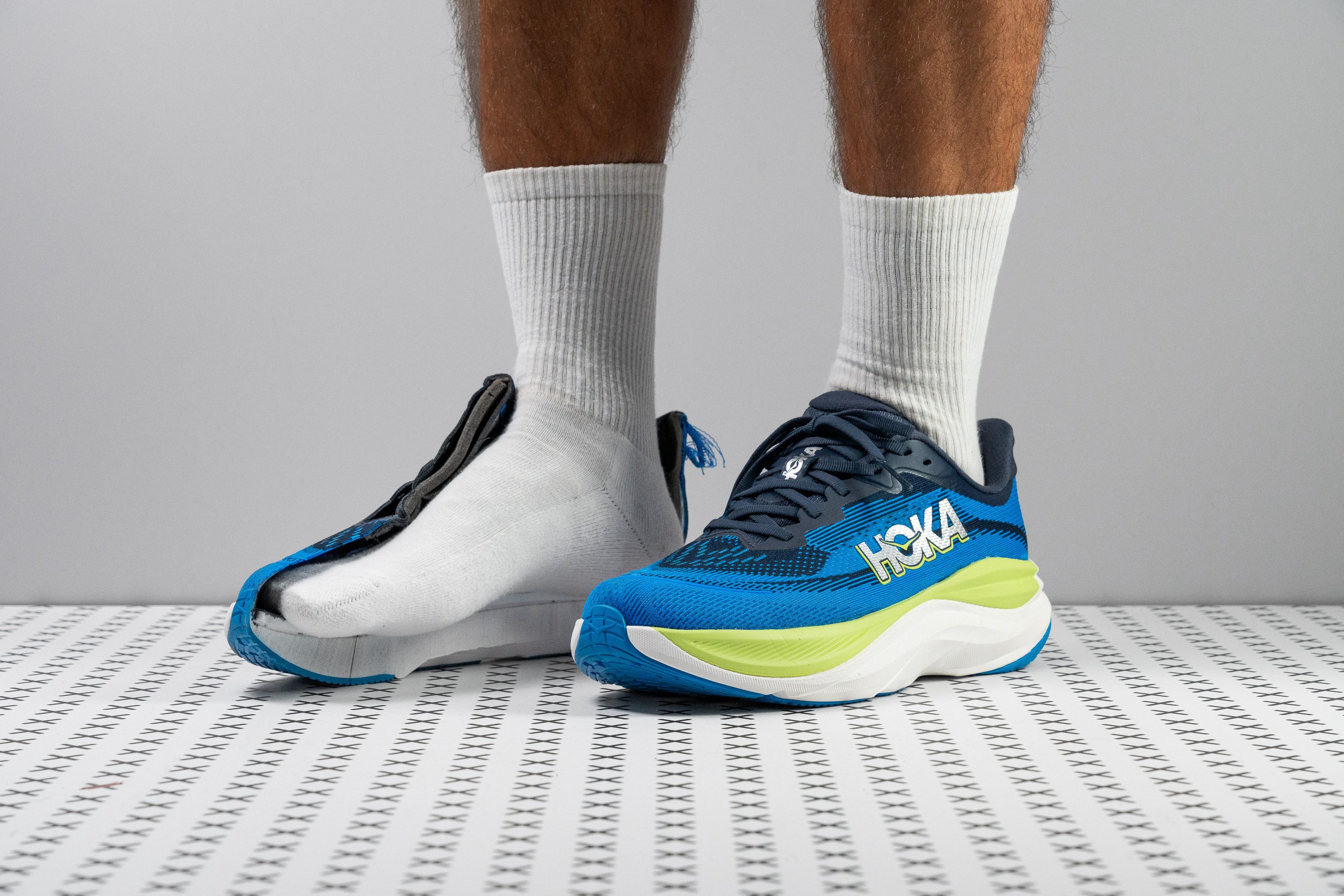Our verdict
Pros
- Great all-around performance
- Enhanced midsole from Clifton
- Versatile across multiple distances
- Solid stability
- Durable construction
- Breathable and comfortable upper
- Secure lockdown
- Grips very well
Cons
- Limited flex
- Could be a bit lighter
- Not the best for walking
Audience verdict
- Top 17% in Hoka running shoes
- Top 24% in running shoes for walking
Comparison
The most similar running shoes compared
+ + Add a shoe | |||||
|---|---|---|---|---|---|
| Audience score | 89 Great! | 89 Great! | 89 Great! | 89 Great! | |
| Price | $160 | $200 | $130 | $160 | |
| Pace | Daily running | Daily running | Daily running | Daily running | |
| Shock absorption | High | High | High | Moderate | |
| Energy return | Moderate | Low | Low | High | |
| Traction | High | - | Moderate | Moderate | |
| Arch support | Neutral | Neutral | Neutral | Neutral | |
| Weight lab Weight brand | 9.9 oz / 282g 10 oz / 283g | 10.8 oz / 305g 10.9 oz / 309g | 9.7 oz / 274g 9.5 oz / 270g | 9.9 oz / 281g 10 oz / 284g | |
| Drop lab Drop brand | 8.7 mm 5.0 mm | 6.6 mm 6.0 mm | 10.5 mm 5.0 mm | 8.9 mm 8.0 mm | |
| Strike pattern | HeelMid/forefoot | Mid/forefoot | Heel | HeelMid/forefoot | |
| Size | True to size | True to size | True to size | True to size | |
| Midsole softness | Soft | Soft | Soft | Balanced | |
| Difference in midsole softness in cold | Normal | Small | Normal | Small | |
| Toebox durability | Decent | Decent | Bad | Decent | |
| Heel padding durability | Good | Good | Decent | Bad | |
| Outsole durability | Good | Decent | Good | Bad | |
| Breathability | Breathable | Breathable | Breathable | Moderate | |
| Width / fit | Medium | Medium | Medium | Medium | |
| Toebox width | Narrow | Medium | Medium | Medium | |
| Stiffness | Stiff | Stiff | Moderate | Moderate | |
| Torsional rigidity | Stiff | Stiff | Stiff | Stiff | |
| Heel counter stiffness | Stiff | Moderate | Stiff | Stiff | |
| Rocker | ✗ | ✓ | ✗ | ✓ | |
| Heel lab Heel brand | 39.3 mm 39.0 mm | 42.3 mm 47.0 mm | 40.7 mm 40.0 mm | 36.1 mm 37.0 mm | |
| Forefoot lab Forefoot brand | 30.6 mm 34.0 mm | 35.7 mm 41.0 mm | 30.2 mm 35.0 mm | 27.2 mm 29.0 mm | |
| Widths available | NormalWide | Normal | NormalWide | Normal | |
| Orthotic friendly | ✓ | ✓ | ✓ | ✓ | |
| Season | SummerAll seasons | SummerAll seasons | SummerAll seasons | All seasons | |
| Removable insole | ✓ | ✓ | ✓ | ✓ | |
| Ranking | #114 Top 31% | #105 Top 29% | #104 Top 28% | #92 Top 25% | |
| Popularity | #117 Top 32% | #8 Top 3% | #242 Bottom 35% | #232 Bottom 38% |
Who should buy
We believe the Hoka Skyflow is an excellent choice for:
- Runners who like other Hoka daily trainers but seek more cushioning underfoot, a roomier fit, or both.
- Those who found previous Hoka trainers like the Bondi lacking in energy return, as this model features a new supercritical midsole for a more responsive ride.
- Anyone in need of a highly cushioned yet stable daily trainer that excels on both short and long-distance runs.
- Hoka fans drawn to the innovative Skyward X who prefer a similar, more affordable option without a plate.

Who should NOT buy
We think that runners who prefer a lightweight feel in their daily trainers might be disappointed with the Skyflow—it's simply too heavy to fit into that category. Fortunately, there are plenty of alternatives on the market, such as the Hoka Mach 6, which is also more affordable and shares the same foam, or the ASICS Superblast 2 for those willing to spend a bit more in a premium shoe.
In our view, the Skyflow may also not be the best option for those seeking an ultra-plush running experience. For a softer feel, we suggest exploring New Balance options like the 1080 v13 or the maximalist More v5, both featuring cloud-like Fresh Foam X midsoles.
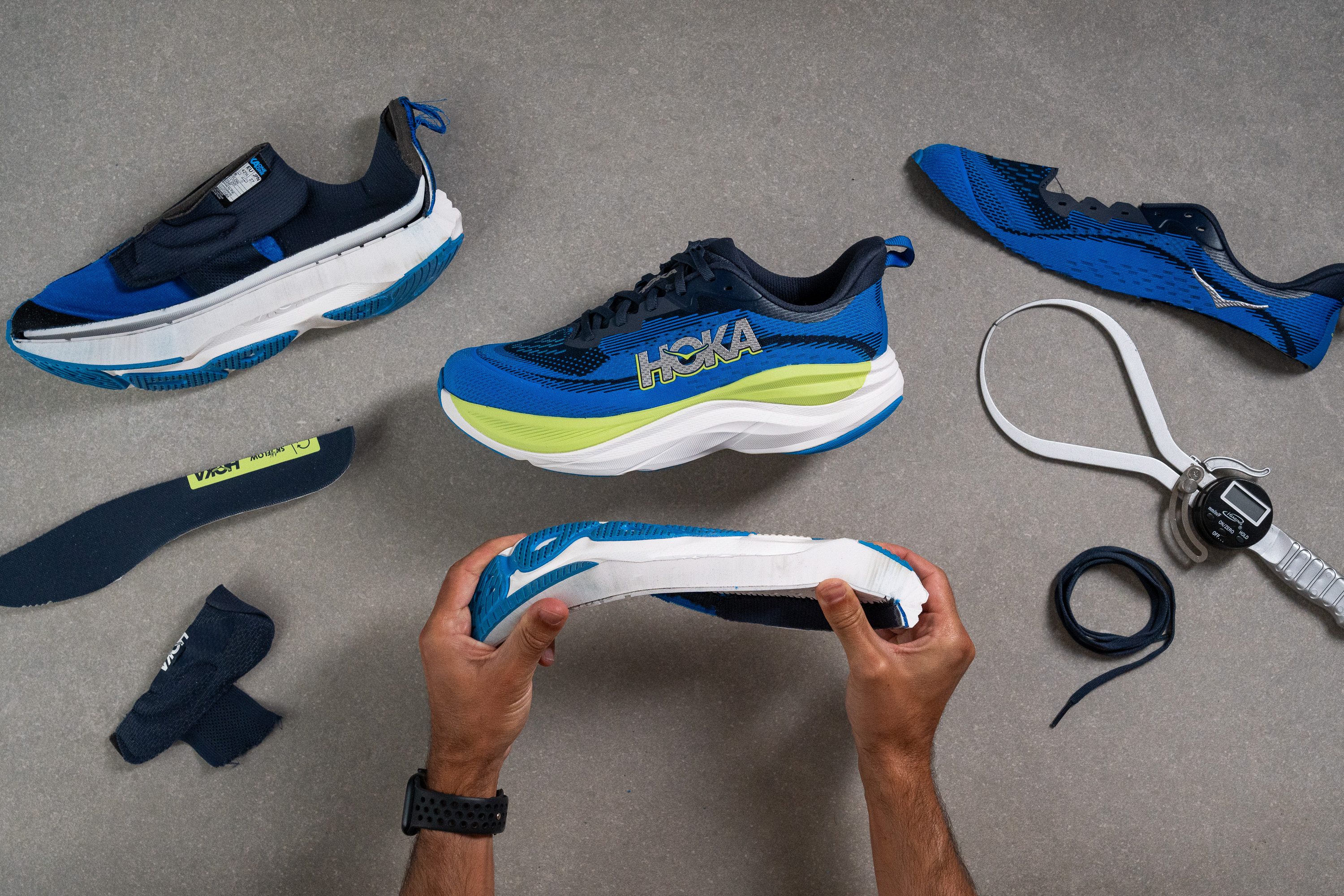
Cushioning
Shock absorption
The Skyflow is Hoka’s take on the current wave of ultra-cushioned shoes, and it absolutely delivered in shock absorption. We recorded 133 SA in the heel and 121 SA in the forefoot—enough for 2-hour runs even for heavyweight runners.
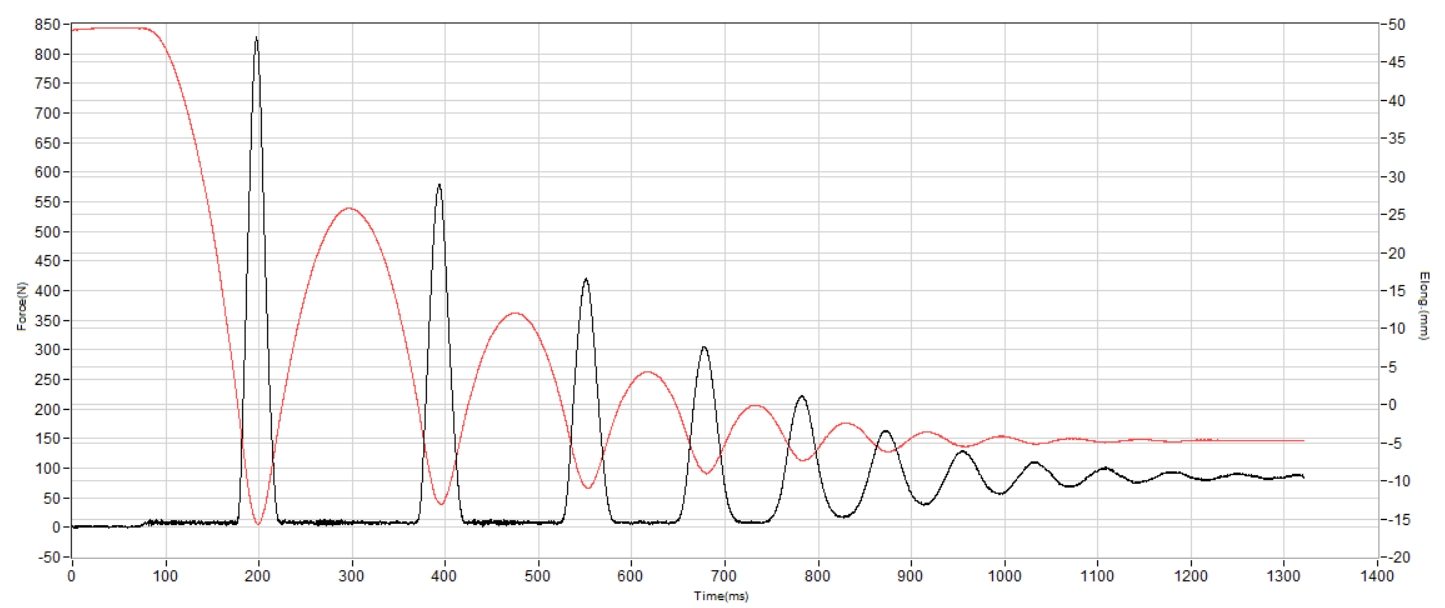
| Hoka Skyflow | 133 SA |
| Average | 129 SA |
Energy return
Energy return is good, but maybe falls slightly short of expectations here in the lab. We measured 58.1%, which is lower than the +60% what we typically find in supercritical EVA foams. It’s not a big issue for slow long runs, though Hoka might want to fine-tune this in version 2.
| Hoka Skyflow | 58.1% |
| Average | 58.5% |
Heel stack
We've highlighted how cushioned this shoe is, and our digital calipers confirm it—much like Shakira's hips, they don't lie!
With a heel stack of 39.3 mm, just shy of the 40-mm mark, it ensures that no rearfoot striker, regardless of weight, will lack cushioning in this area.
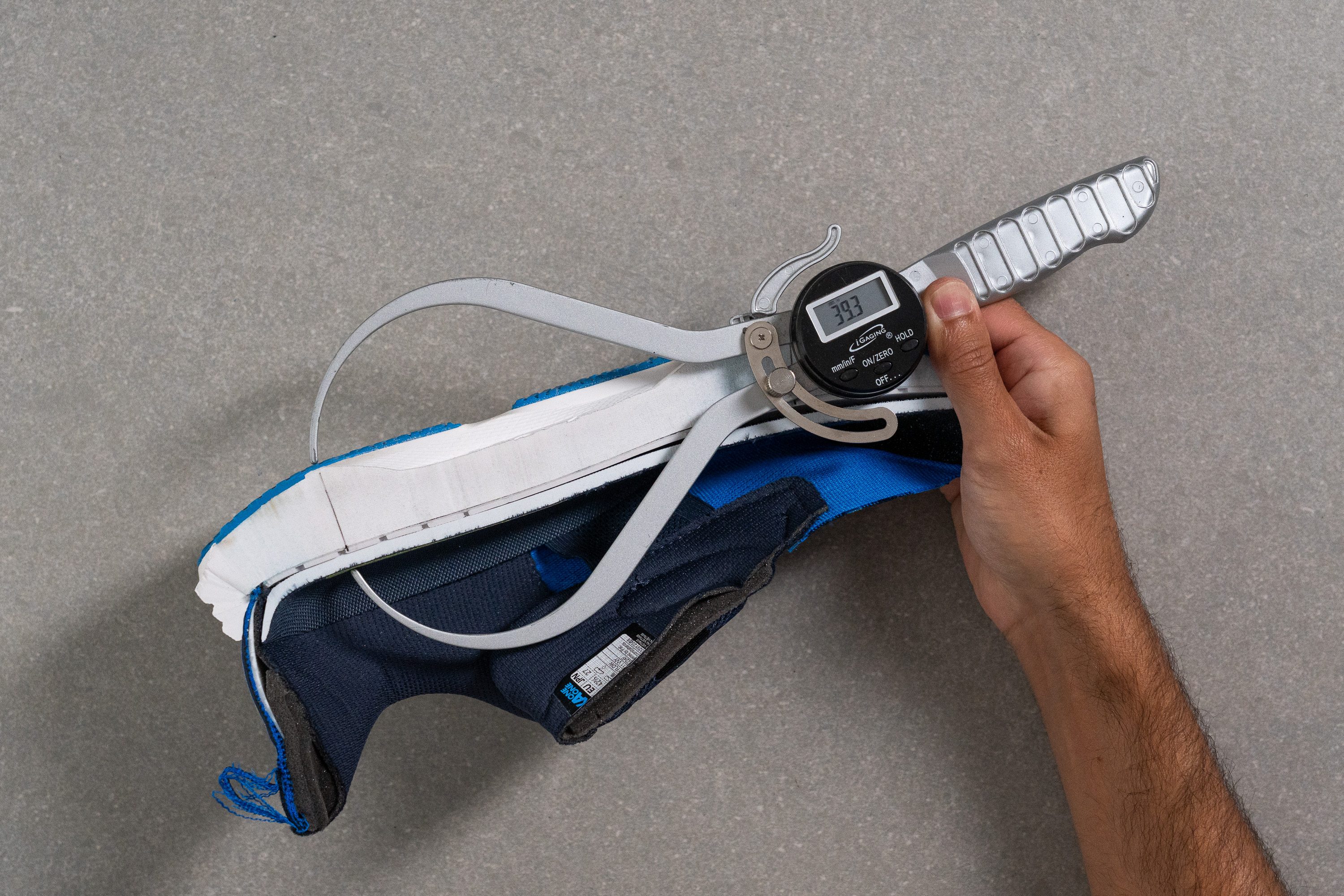
| Hoka Skyflow | 39.3 mm |
| Average | 34.8 mm |
Forefoot stack
The forefoot turned out slightly thinner than we expected at 30.6 mm—more details in our drop test—yet there is ample foam underfoot.

Just like the heel, the situation is similar for midfoot and forefoot strikers—the Skyflow consistently performs on long distances, comfortably handling workouts exceeding 15 miles.

| Hoka Skyflow | 30.6 mm |
| Average | 26.2 mm |
Drop
Measured to World Athletics standards, the heel-to-toe drop of the Skyflow clocks in at 8.7 mm, almost doubling the 5-mm drop claimed by Hoka.
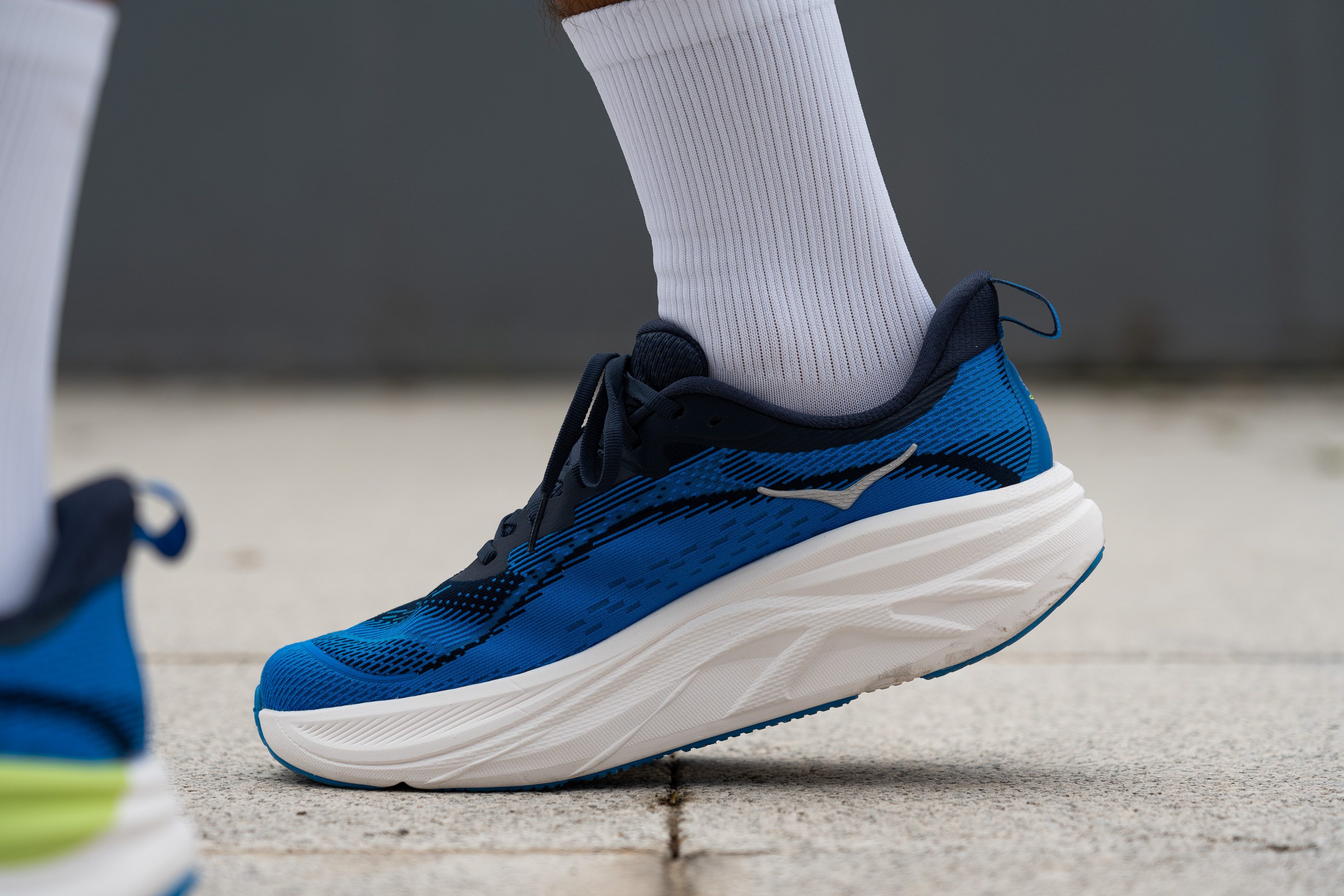
This considerable difference likely stems because Hoka doesn't follow these standards. While this variation might slightly benefit midfoot and forefoot strikers, the 8.7 mm drop is considered versatile for all types of footstrikes and we're good with it.

| Hoka Skyflow | 8.7 mm |
| Average | 8.6 mm |
Midsole softness
We've had our gripes with Hoka's use of regular EVA midsoles in their daily trainers—feeling a tad outdated and lacking in energy return. This time, however, there's a shift, with the introduction of a modern supercritical EVA formulation, similar to Brooks' DNA Loft v3, that brings a lively and responsive feel, meeting our expectations for its price range.
As for the midsole's softness, we encountered a well-balanced composition that avoids an overly plush sensation underfoot. Our 19.4 HA measurement confirms this feel.
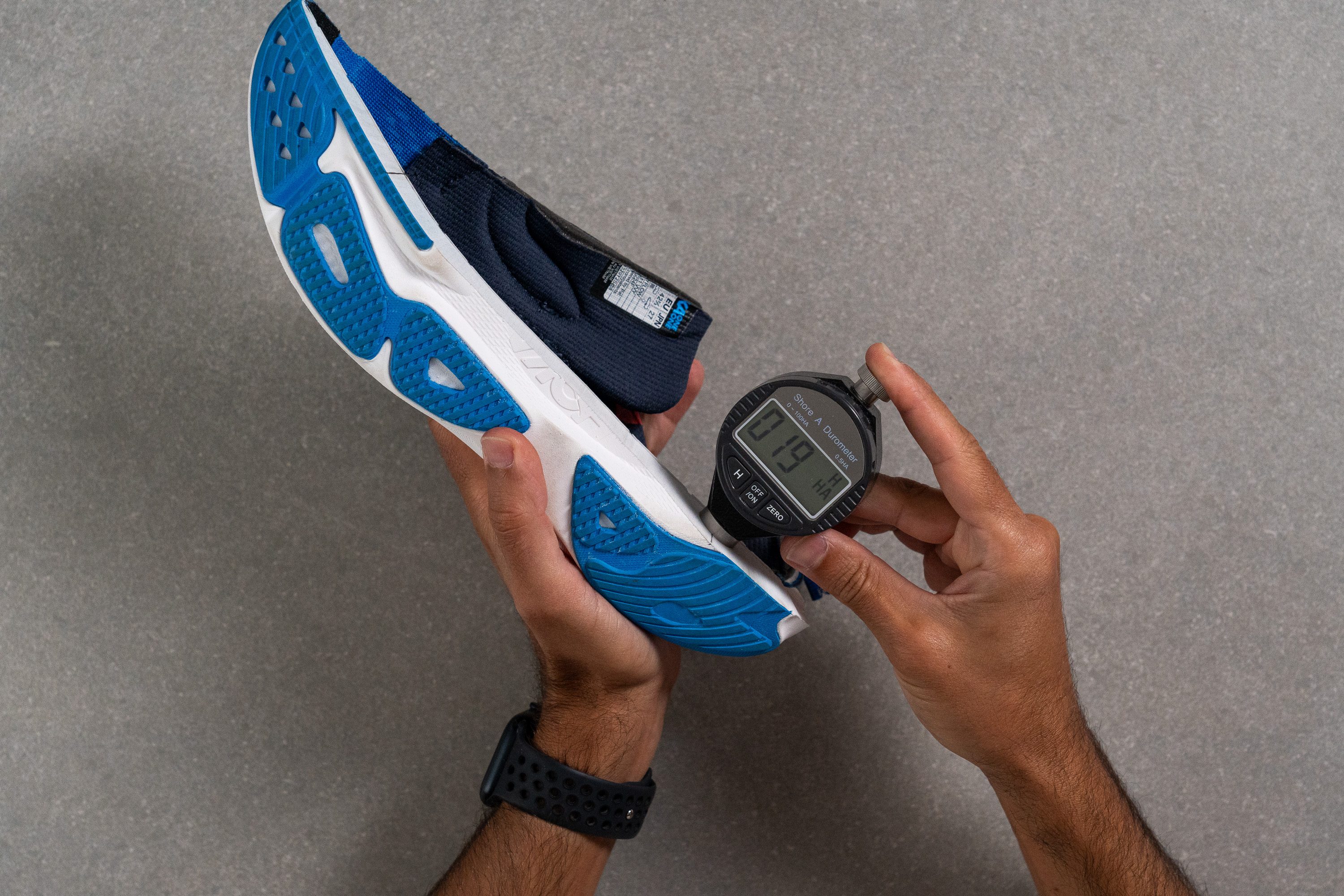
| Hoka Skyflow | 19.4 HA |
| Average | 20.4 HA |
Rocker
Many runners think of Hoka as synonymous with rockered designs, but our tests show the Skyflow strikes a balance comparable to popular trainers like the Nike Pegasus 41.
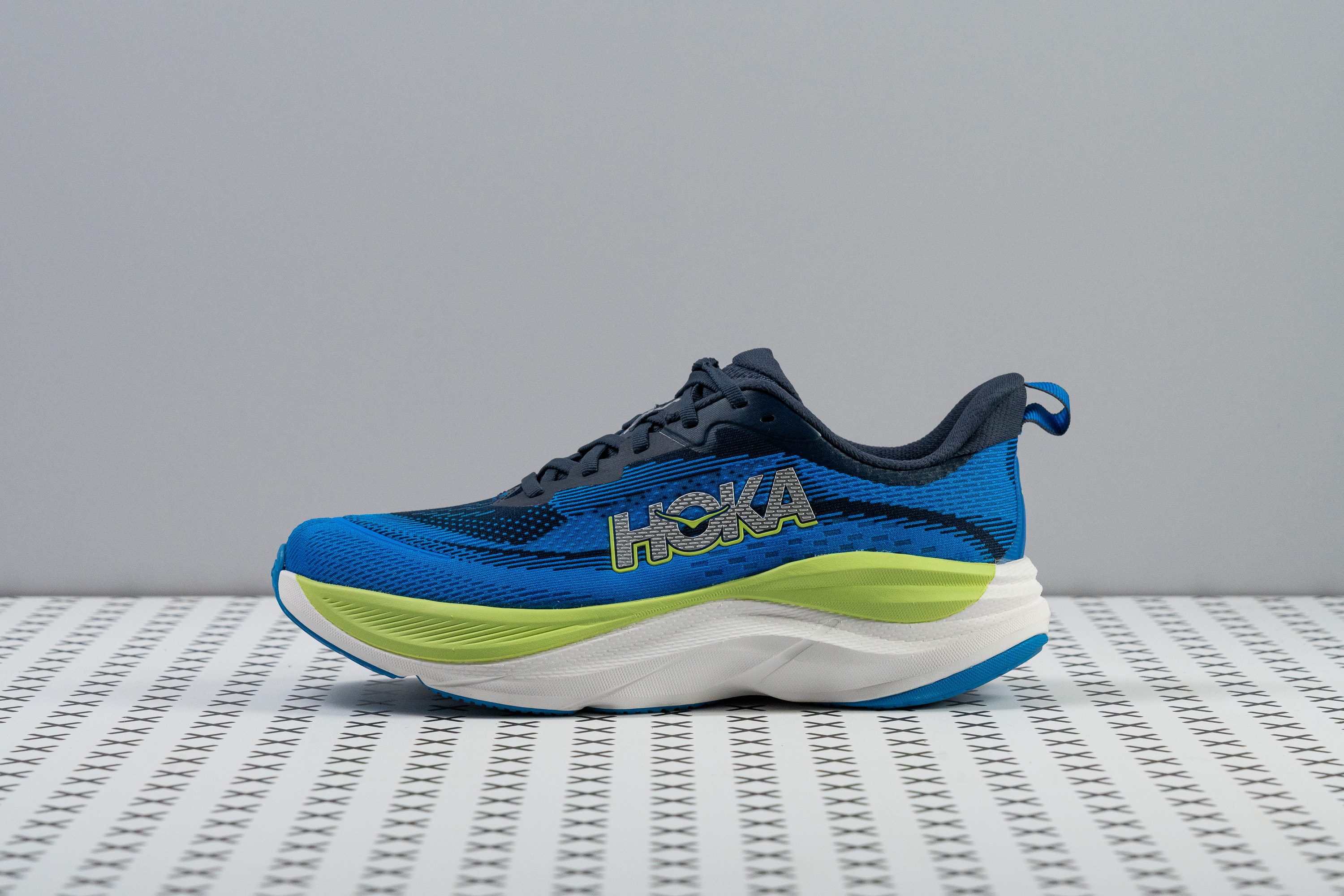
Hoka advertises an early-stage meta rocker for the Skyflow, and our measurements confirm this. Yet, the rocker is subtle, ensuring the ride remains natural and versatile enough for handling all paces.

Size and fit
Size
Hoka Skyflow fits true to size (46 votes).
Width / Fit
Hoka is shifting away from their traditionally snug-fitting uppers to more spacious designs in their recent models, and we are so much into it.
The Skyflow's width measures 94.3 mm, falling slightly short of the average width but coming remarkably close.
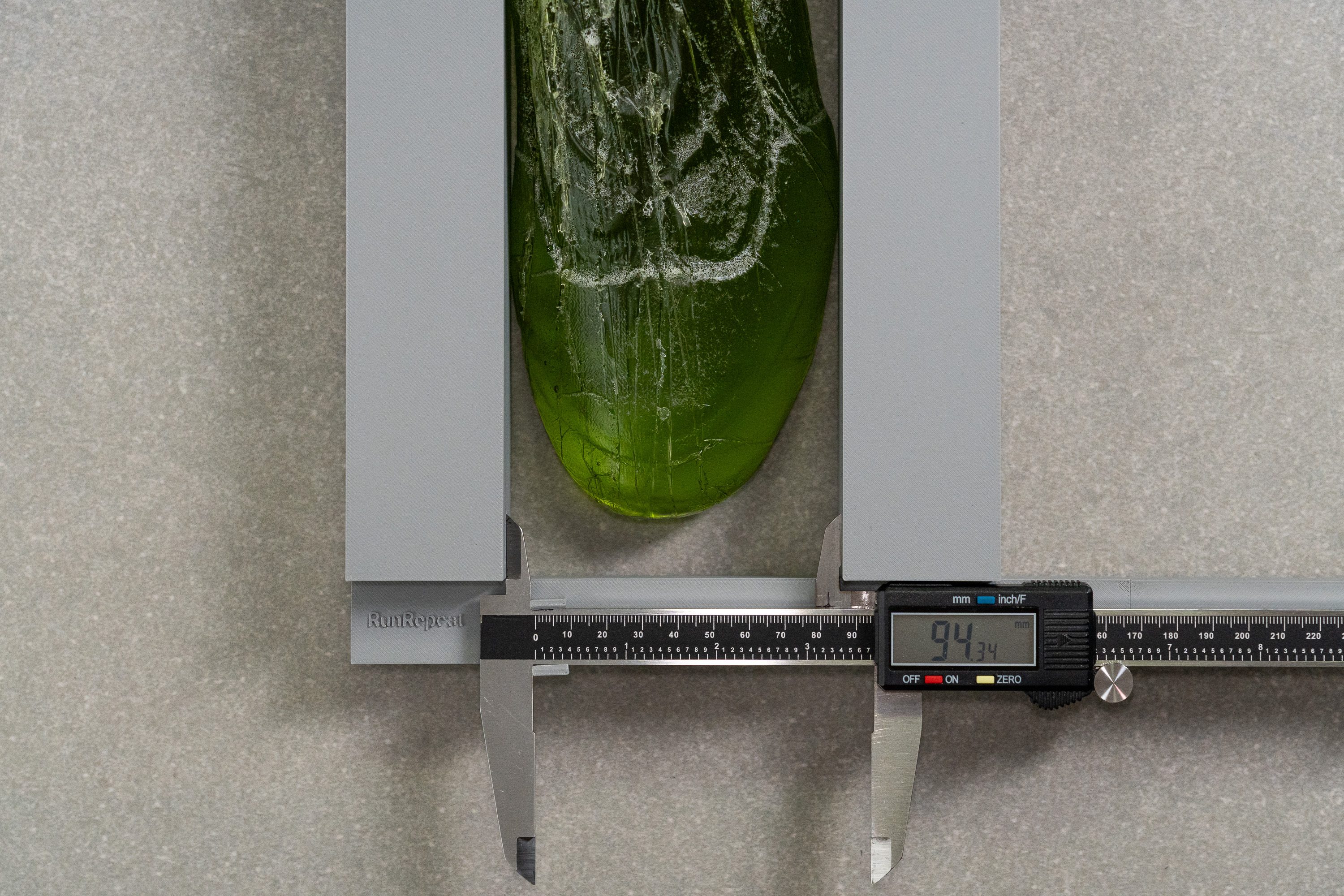
| Hoka Skyflow | 94.3 mm |
| Average | 95.1 mm |
Toebox width
The classic Hoka design is evident at the toebox, where our measurement showed a narrow 69.5 mm. Based on our findings, this places it among the rare few under the 70-mm mark, making it ideal for runners with slim-foot profiles.
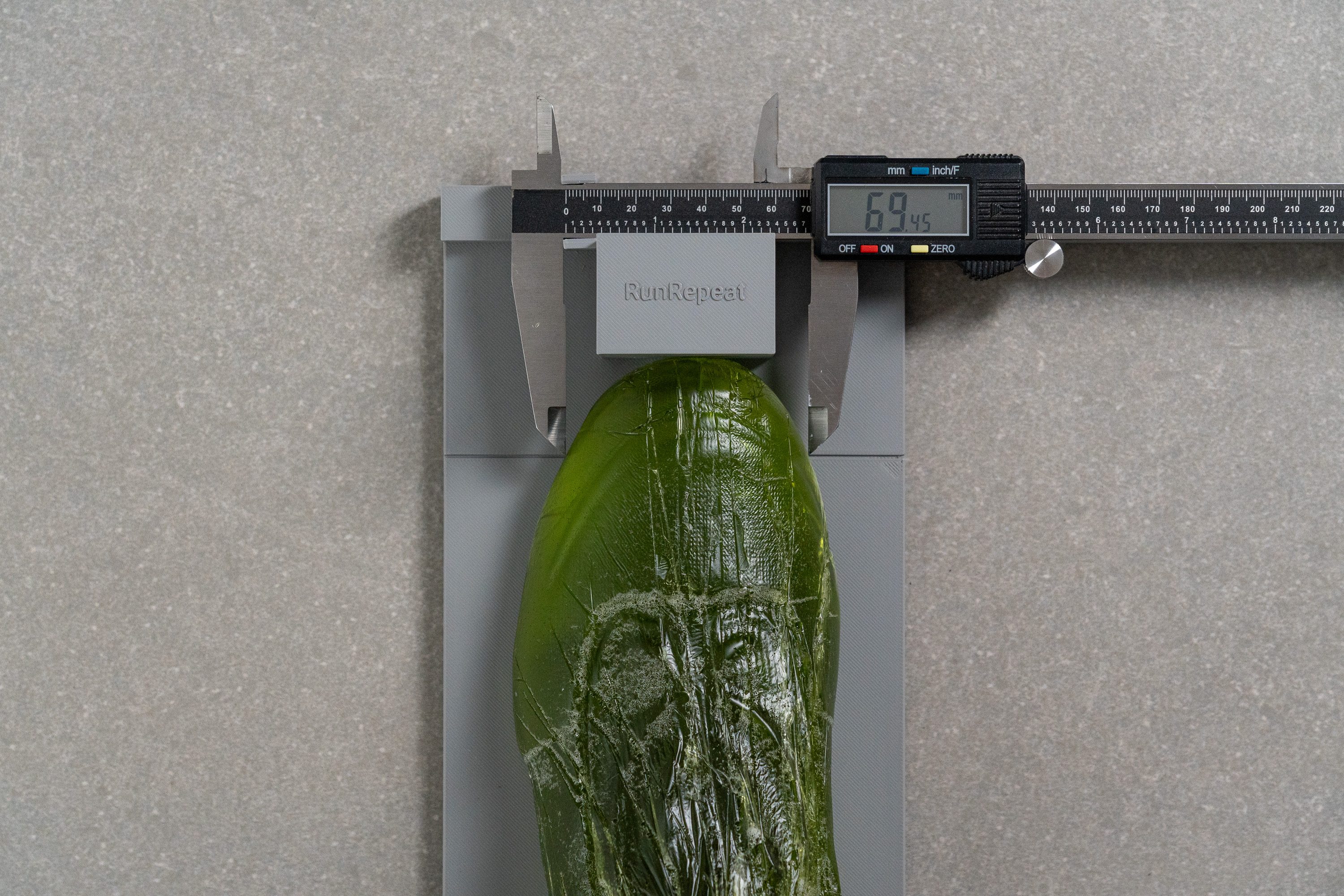
| Hoka Skyflow | 69.5 mm |
| Average | 73.2 mm |
Toebox height
We discovered that the toe area offers decent vertical space for upward movement. Measuring 27.1 mm, it surprised us, as Hoka, known for low-volume designs, delivered a well-proportioned fit this time.
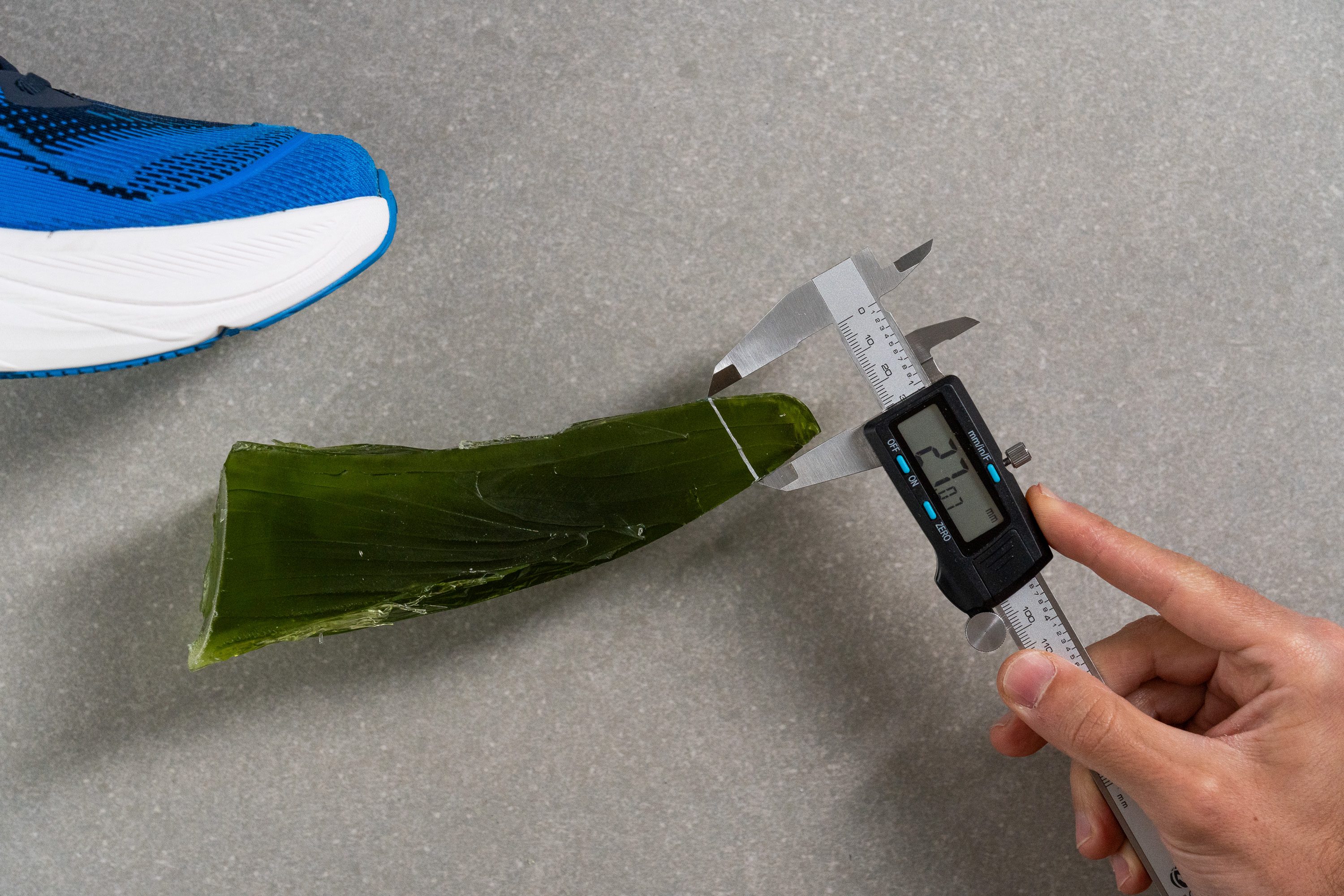
| Hoka Skyflow | 27.1 mm |
| Average | 27.1 mm |
Traction / Grip
Traction test
The Skyflow features a fair amount of exposed midsole, and that's usually a recipe for lower wet-surface performance. However, it delivered a pleasant surprise, scoring 0.47 in our demanding grip test.
This means you’ll enjoy reliable traction on wet roads and standout grip on dry pavement. It’s always satisfying when a shoe exceeds expectations!
| Hoka Skyflow | 0.47 |
| Average | 0.48 |
Outsole design
The midsole design stands out with its ultra-wide midfoot area, setting it apart from most other brands.
We noticed that Hoka aimed to reinforce areas typically prone to wear, yet much of the midsole remains exposed. For those who tend to wear out outsoles quickly, a max-cushioned trainer with full-length outsole coverage, like the Nike Invincible 3, might be a better option.

Flexibility / Stiffness
We discovered that the Skyflow was somewhat stiffer than desired, both torsionally and longitudinally.
In our bend test, it registered 18.7N—quite distant from the flexibility found in running shoes better suited for everyday activities such as walking the dog or gym workouts, like the Brooks Ghost 16.
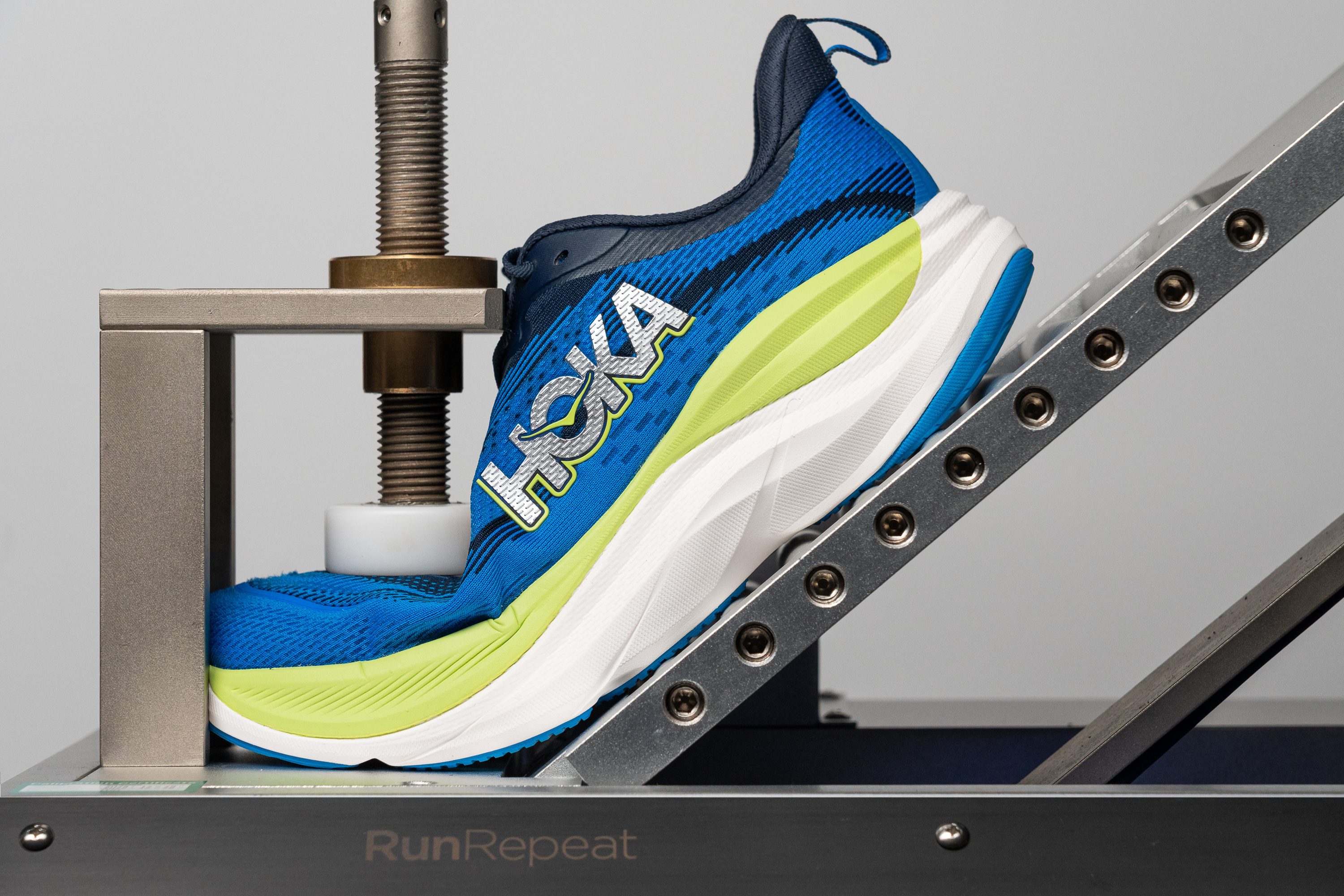
| Hoka Skyflow | 18.7N |
| Average | 15.3N |
Weight
The weight of the Skyflow isn't a major concern for us, though it's not outstanding either. At 9.9 oz or 282g, it's good enough for a max-stack daily trainer, and we're in peace with this outcome.
But Hoka is known for producing lighter shoes compared to competitors, and the Skyflow is somewhat heavier than similar models like the ASICS Novablast 4, which offers comparable cushioning and comfort.
So even though it's under 10 ounces and the first in the Skyflow series, we hope Hoka will create a lighter version for the next version that should arrive in 2026.
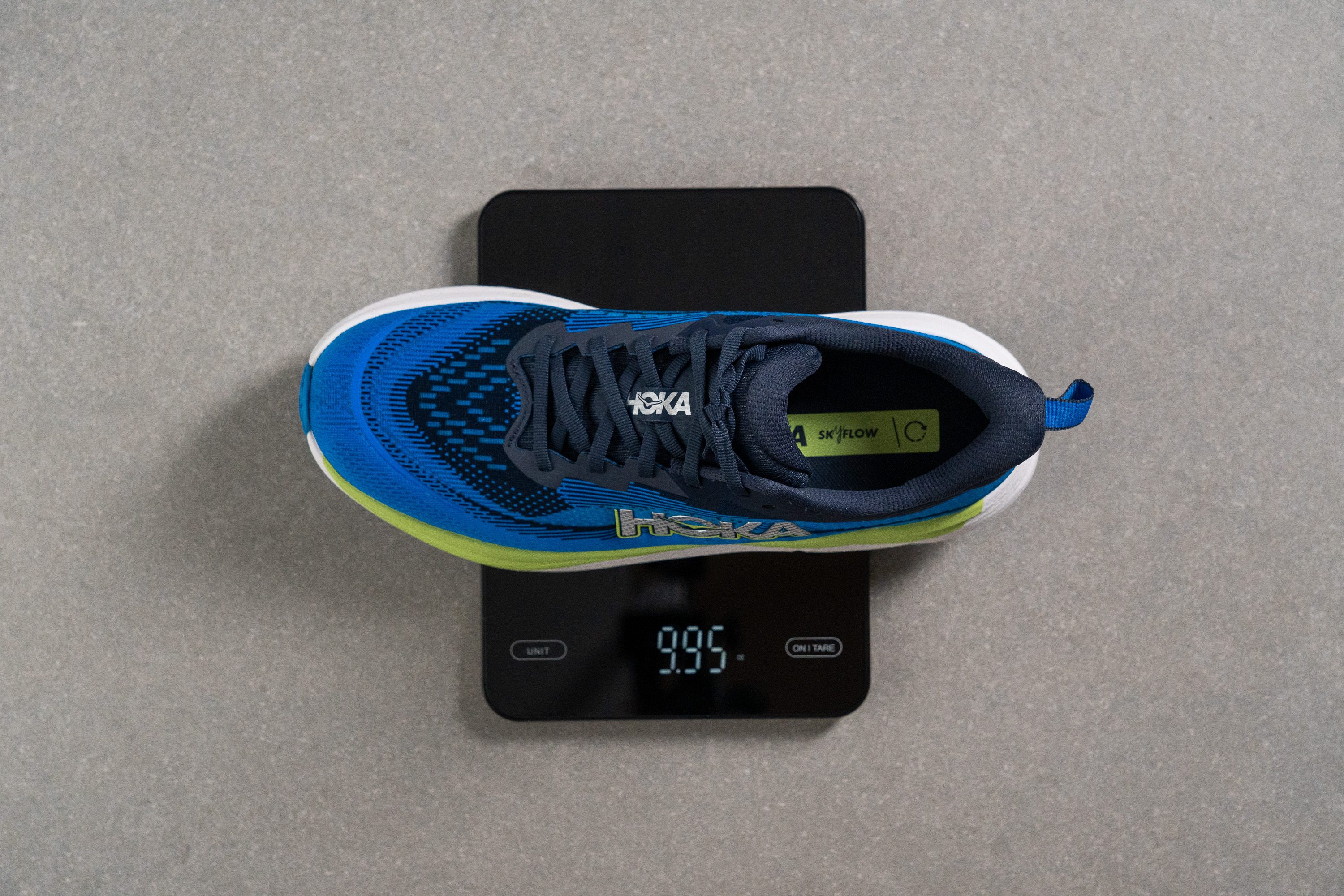
| Hoka Skyflow | 9.9 oz (282g) |
| Average | 9.3 oz (264g) |
Breathability
When we brought the Skyflow back to our lab after purchasing it, we were skeptical about the breathability of its creel jacquard upper due to its dense appearance and lack of visible ventilation holes.
However, our doubts were quickly went away during testing. Using our smoke-pumping machine, we discovered that the toebox ventilation was exceptional, earning a perfect score of 5 out of 5.
With the aid of a light, we identified the areas with superior ventilation in the Skyflow. It became evident that Hoka concentrated on enhancing airflow in the toebox, while the midfoot area remains denser than your average daily trainer.
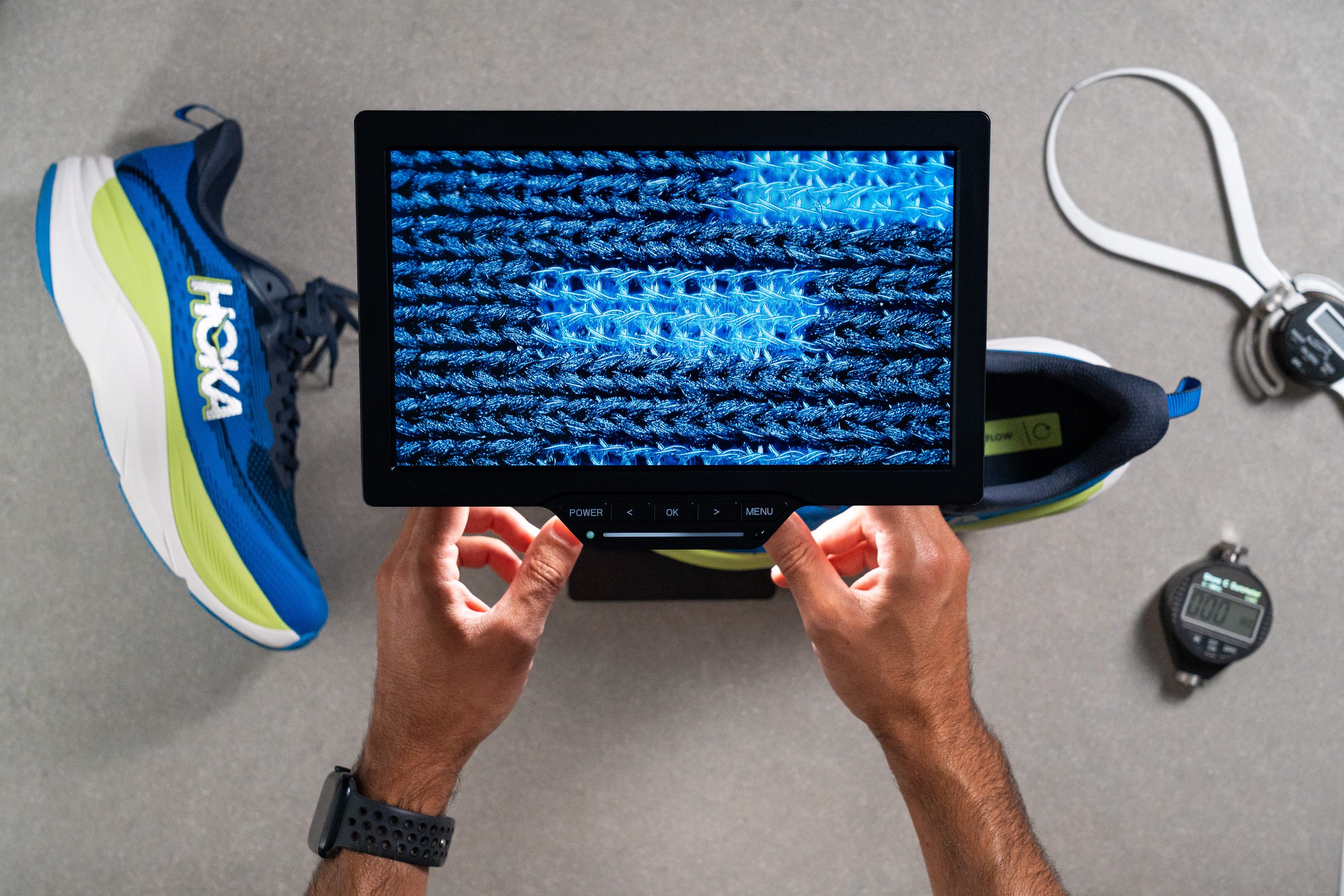
Under the microscope, the jacquard mesh upper doesn't look very breathable, and without our smoke test, we might have continued to underestimate its ventilation capabilities. But airflow through the clearer, thinner blue zones was surprisingly efficient.
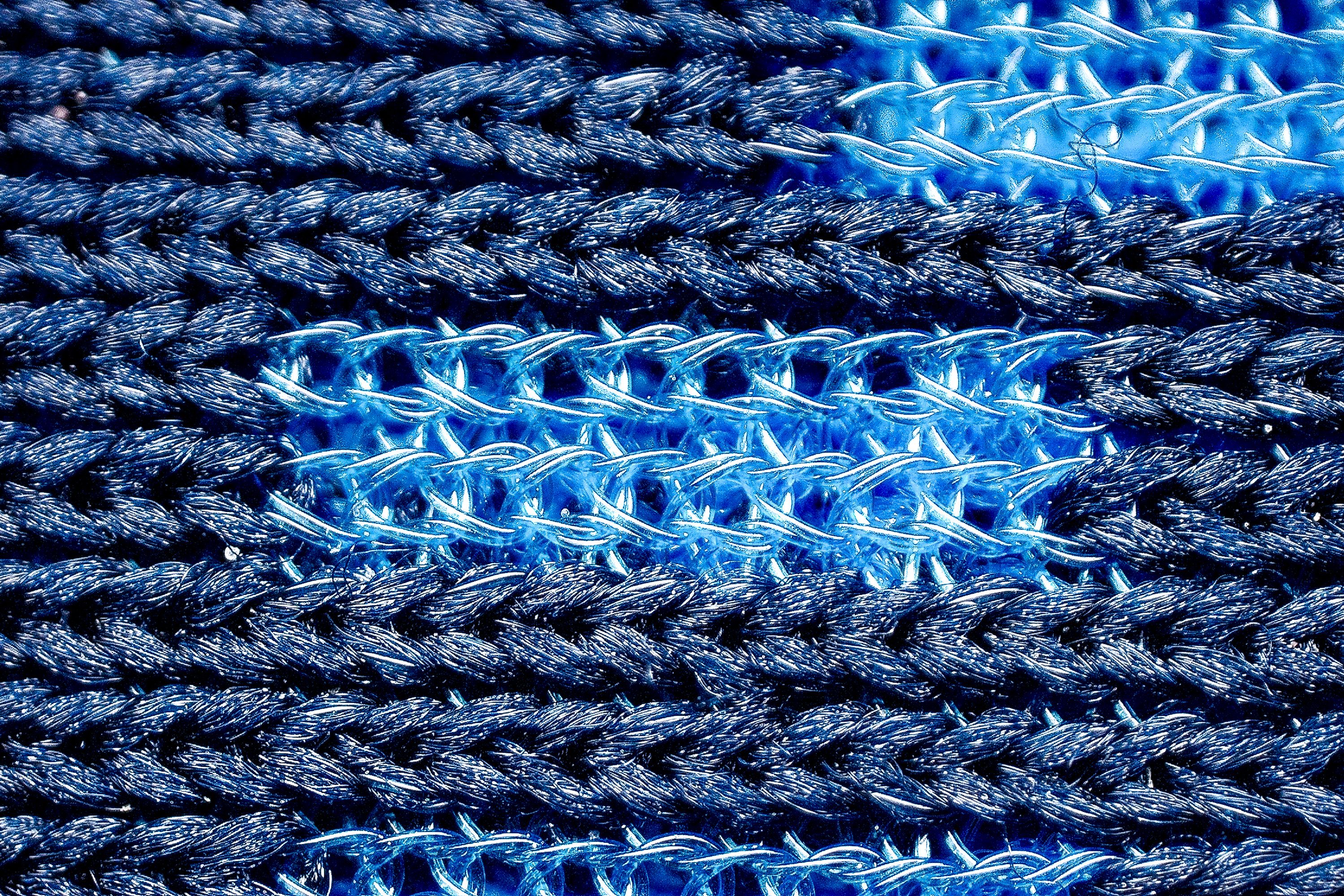
We also noted that the upper is excellently structured for comfort, featuring ample padding in the heel collar and tongue.
A reinforced toe cap adds a layer of durability, enhancing the overall value. Overall, it's a fantastic upper for the price.
| Hoka Skyflow | 5 |
| Average | 3.7 |
Stability
Lateral stability test
Hoka has significantly enhanced stability in the Skyflow by implementing their Heel-focused Active Foot Frame technology, which on paper is a good call for this high-stack shoe.
But we are not sure. While this technology certainly boosts stability, it also introduces a downside—increasing the shoe's stiffness beyond the typical flexibility expected of a daily trainer.

Additionally, we've observed that the unusually wide midfoot compromises agility, which could be a dealbreaker for some runners that prefer a more natural running experience.
Torsional rigidity
As we hinted earlier, Hoka has opted for a stiffer design to boost stability.
Indeed, our evaluations confirm that the Skyflow is noticeably more rigid compared to typical daily trainers, earning a 4/5 on our rigidity scale.
| Hoka Skyflow | 4 |
| Average | 3.5 |
Heel counter stiffness
Similarly, the heel counter is notably stiff, yet it remains quite comfortable due to the ample padding surrounding it. For us, it merits a high 4/5 rating.
| Hoka Skyflow | 4 |
| Average | 2.9 |
Midsole width - forefoot
We discovered that Hoka also enhanced the stability of the Skyflow by widening the sole to 116.3 mm.
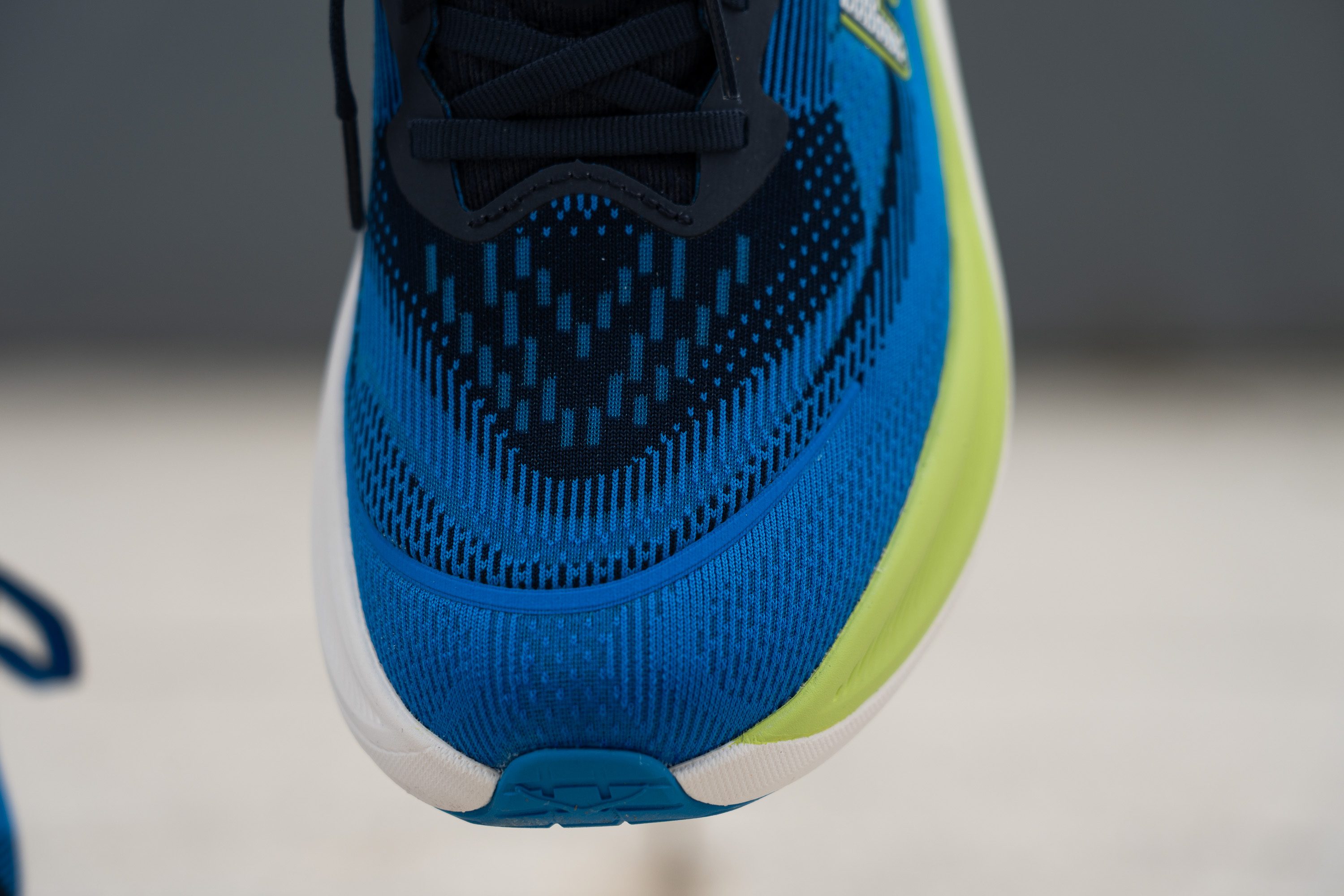
Comparatively, its little sister, the Mach 6, measures slightly narrower at 113.9 mm in this area. This adjustment contributes significantly to the improved stability of the Skyflow.
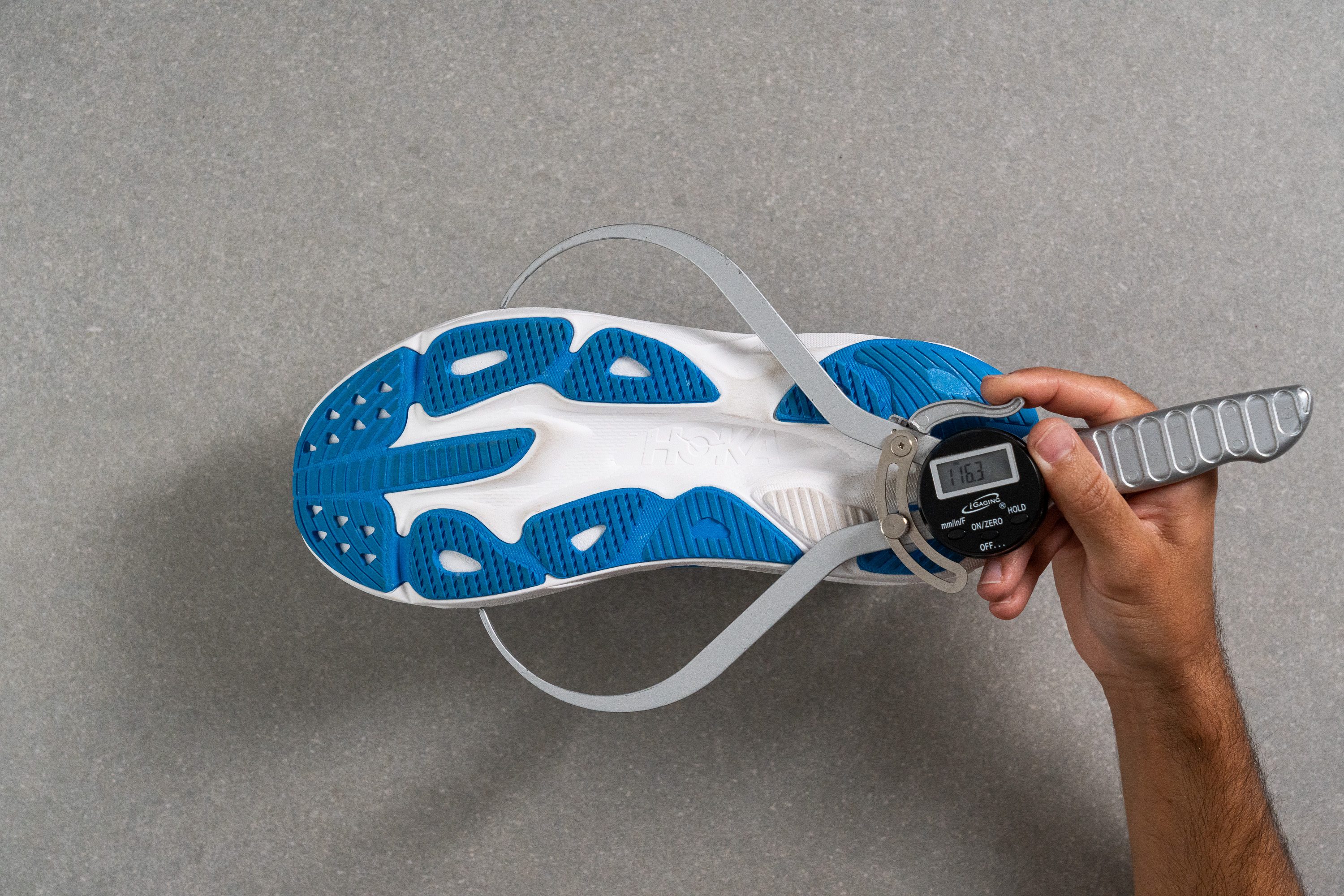
| Hoka Skyflow | 116.3 mm |
| Average | 114.4 mm |
Midsole width - heel
Our measurements showed that the heel of the Skyflow is 94.7 mm wide, slightly exceeding the width of average running shoes. This design is ideal for neutral heel strikers and, in our opinion, may also accommodate runners with very mild pronation issues comfortably.
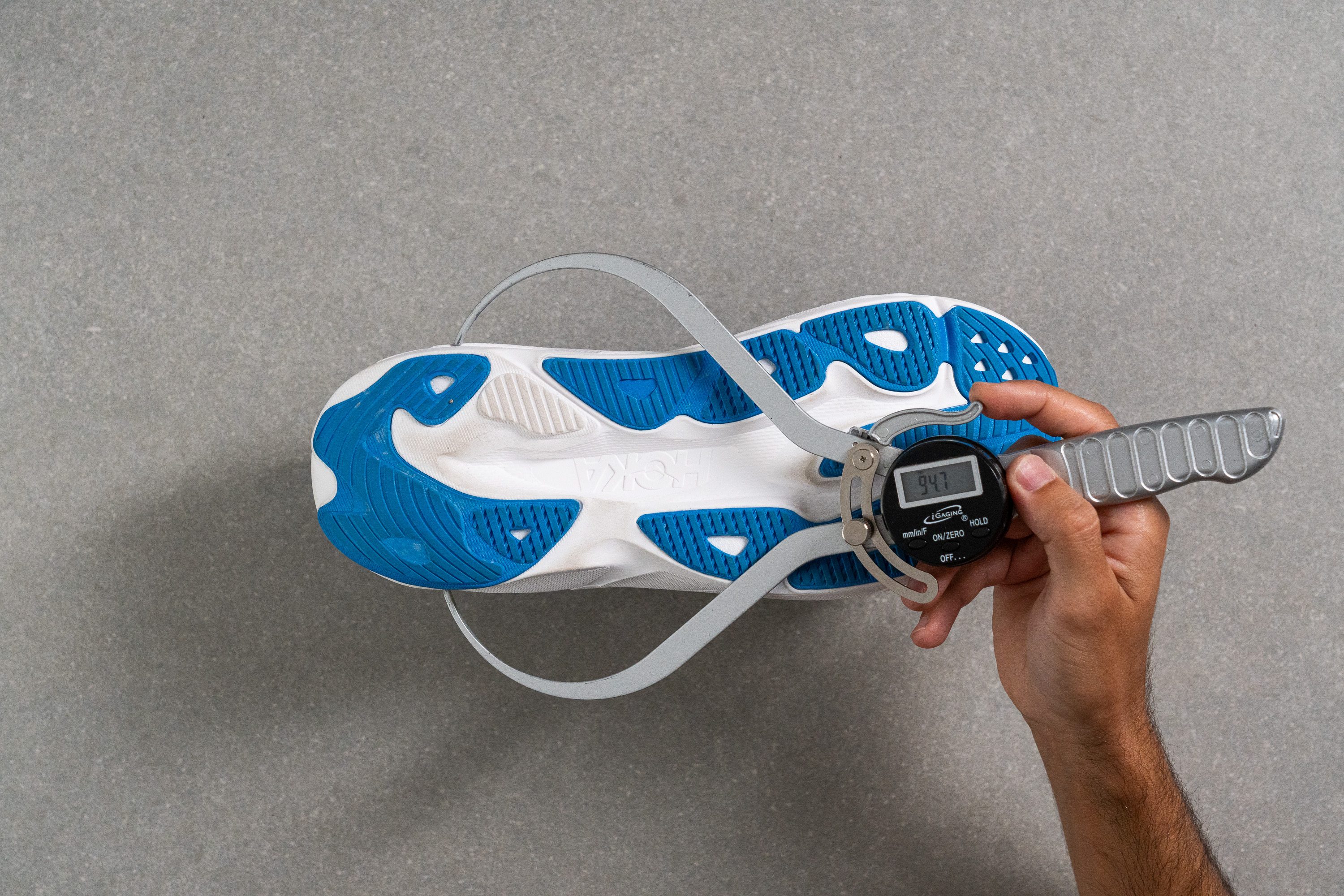
| Hoka Skyflow | 94.7 mm |
| Average | 90.7 mm |
Durability
Toebox durability
Expecting that the Skyflow's top breathability might indicate a weaker upper, we put it to the test.
We subjected the mesh to a stress test using a Dremel at 5K RPM and 3.2N of force. The results were better than expected—we awarded its durability a solid 3 out of 5!
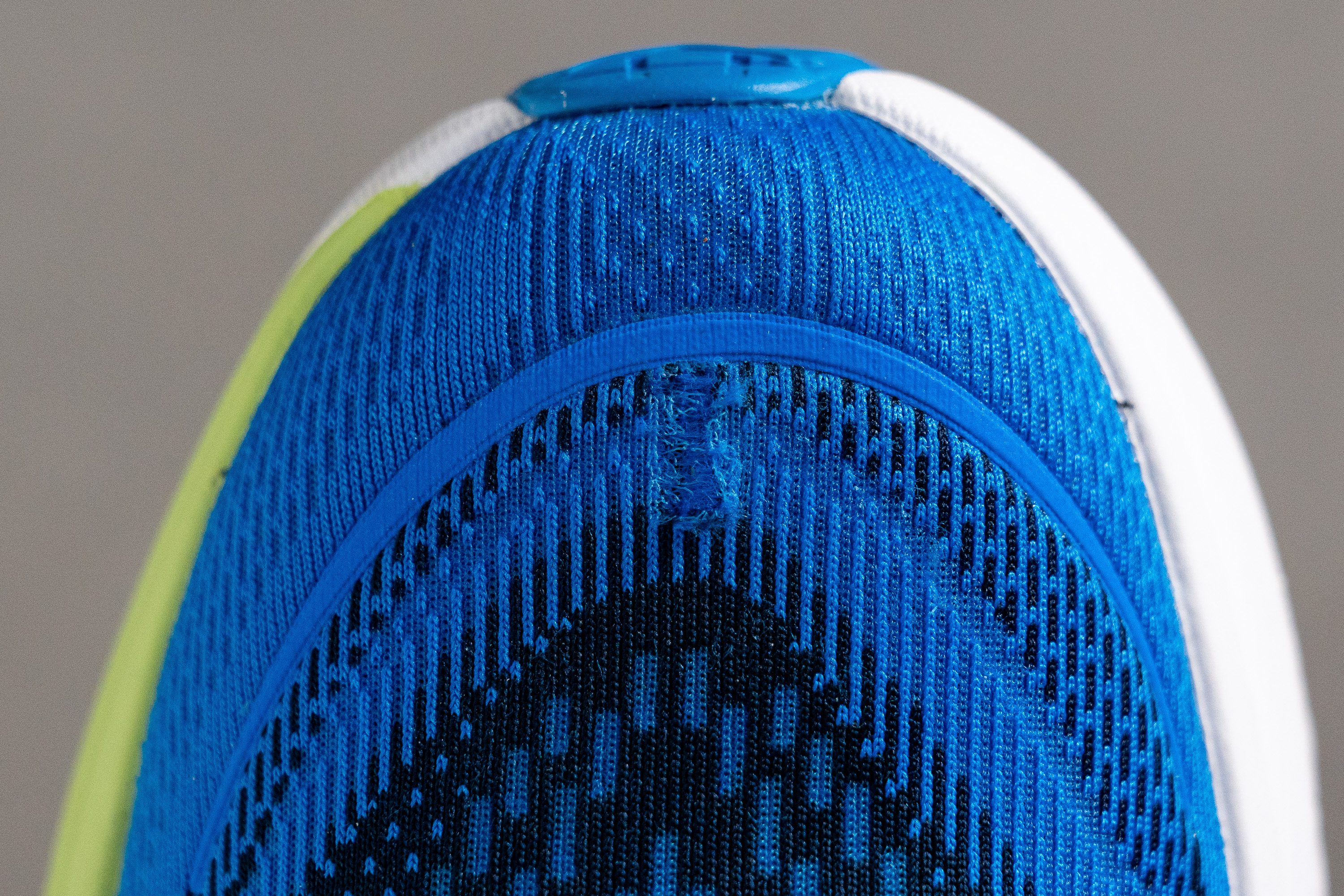
| Hoka Skyflow | 3 |
| Average | 2.6 |
Heel padding durability
Hoka has historically had mixed results in this test—a crucial one for runners who experience friction in the Achilles area.
Fortunately, we discovered exceptional resistance in the heel lining of the Skyflow, which earned a remarkable score of 5 out of 5, a feat not many shoes accomplish in our lab.
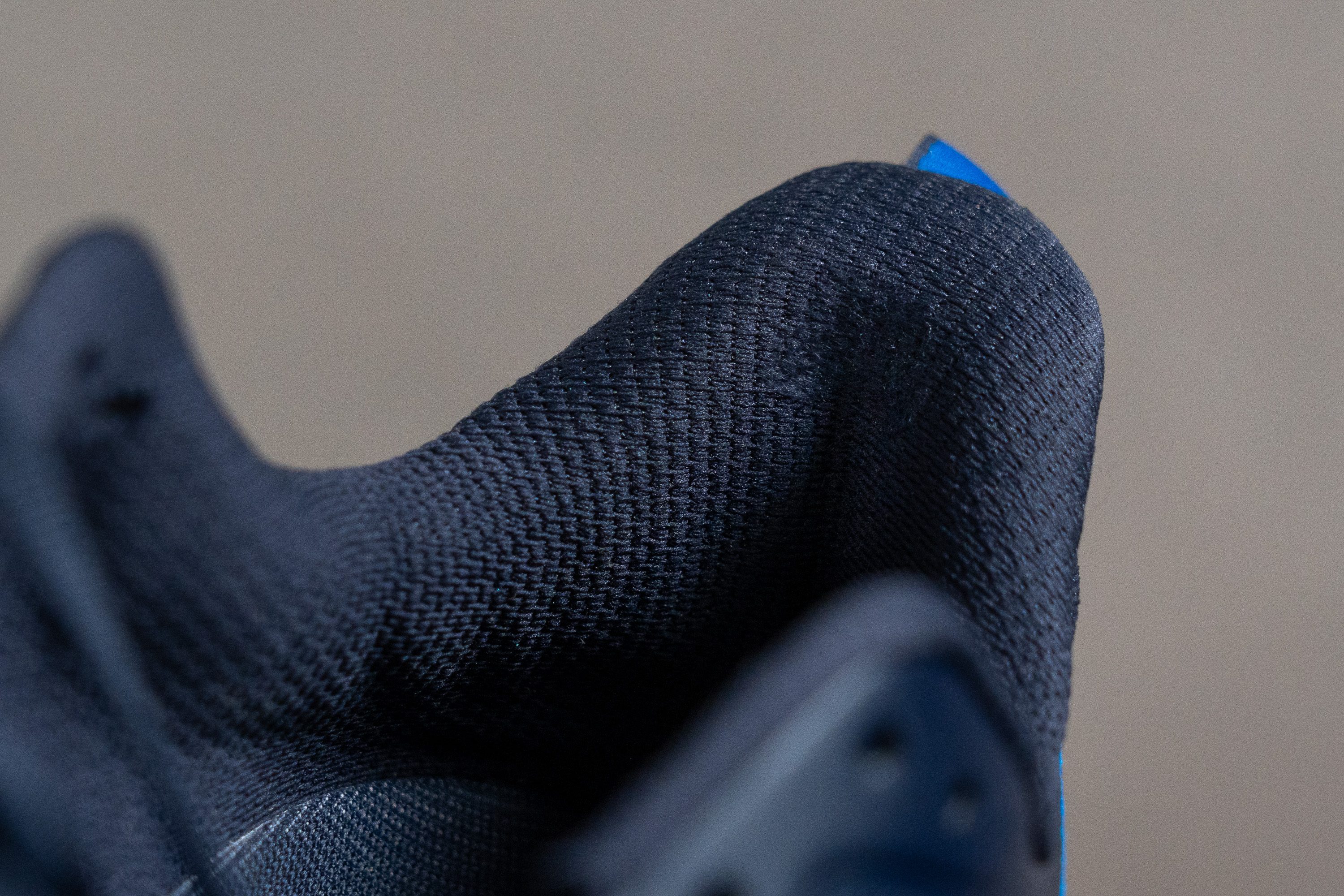
| Hoka Skyflow | 5 |
| Average | 3.4 |
Outsole durability
We were eager to test the robustness of the Skyflow's rubber with our Dremel—so we got right to it!
After the test, it became clear that the Skyflow outsole delivers, showing a modest 0.8 mm indentation. While it doesn't match the toughest rubbers on the market, its durability is certainly sufficient to ease any concerns about its longevity.
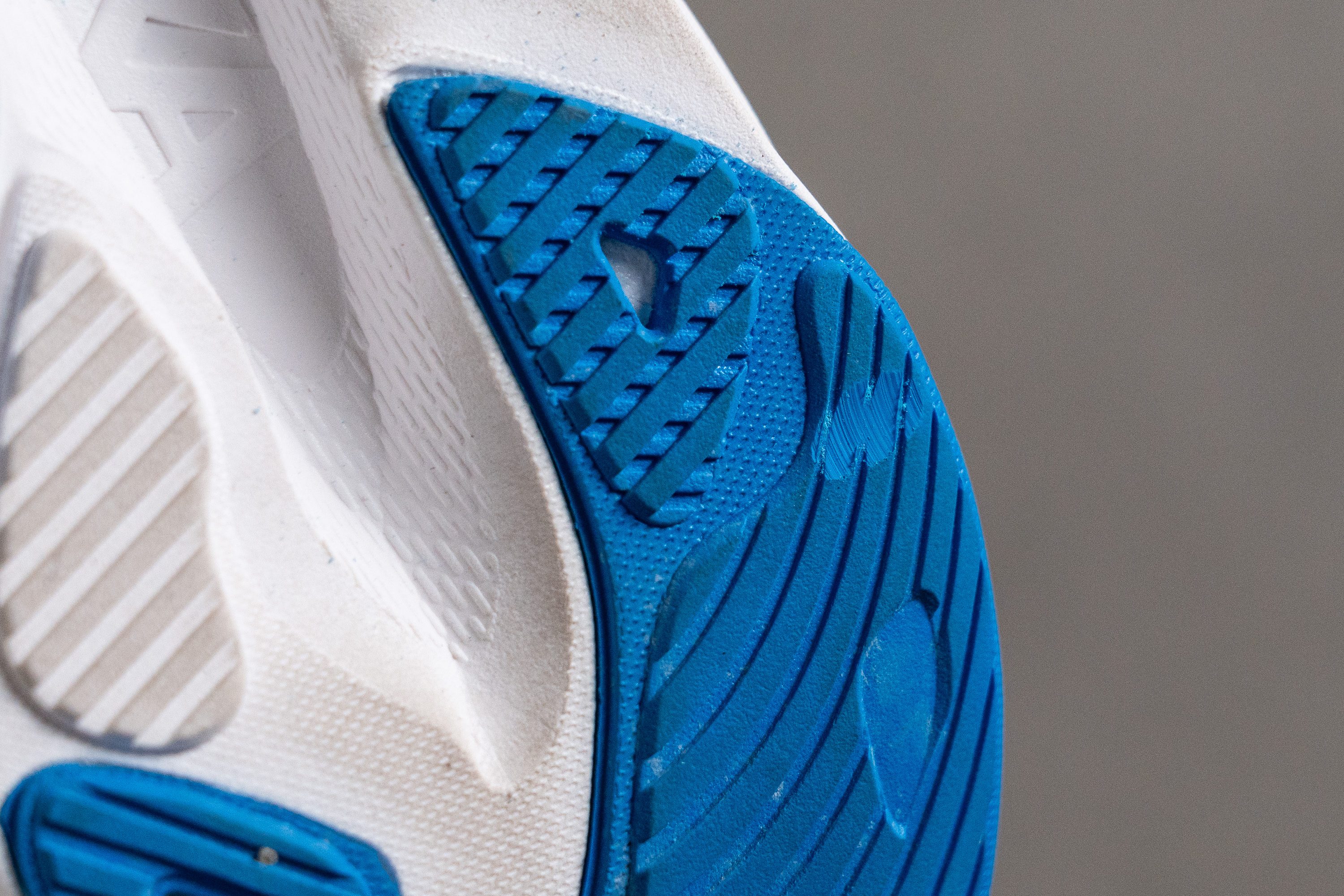
| Hoka Skyflow | 0.8 mm |
| Average | 1.1 mm |
Outsole thickness
Any doubts about durability were quickly dispelled when we discovered that the outsole boasts a thickness of 3.3 mm.
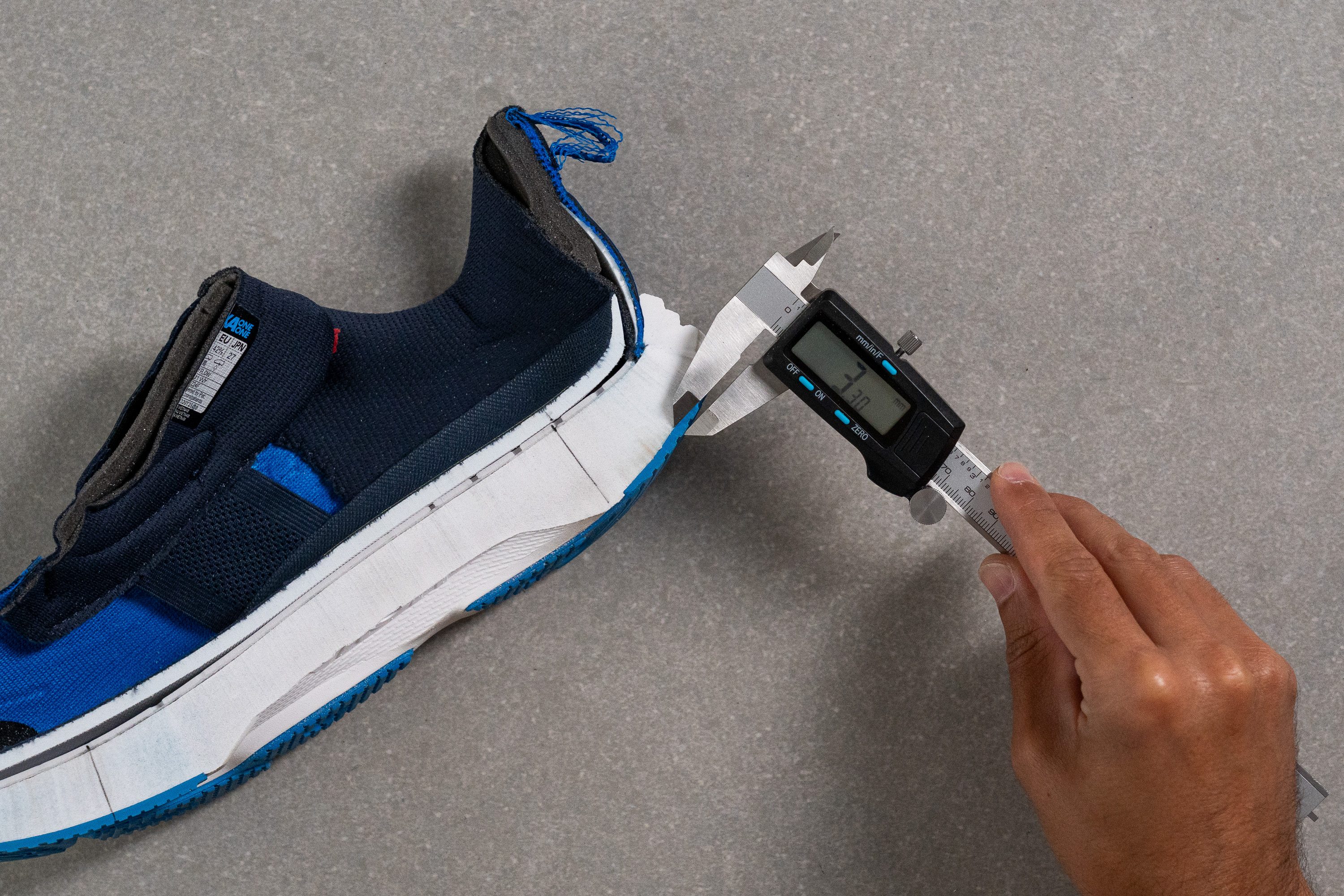
| Hoka Skyflow | 3.3 mm |
| Average | 3.2 mm |
Misc
Insole thickness
We were surprised by the drop and the insole thickness—measuring at 5.1 mm, it's slightly thicker than what we typically encounter.
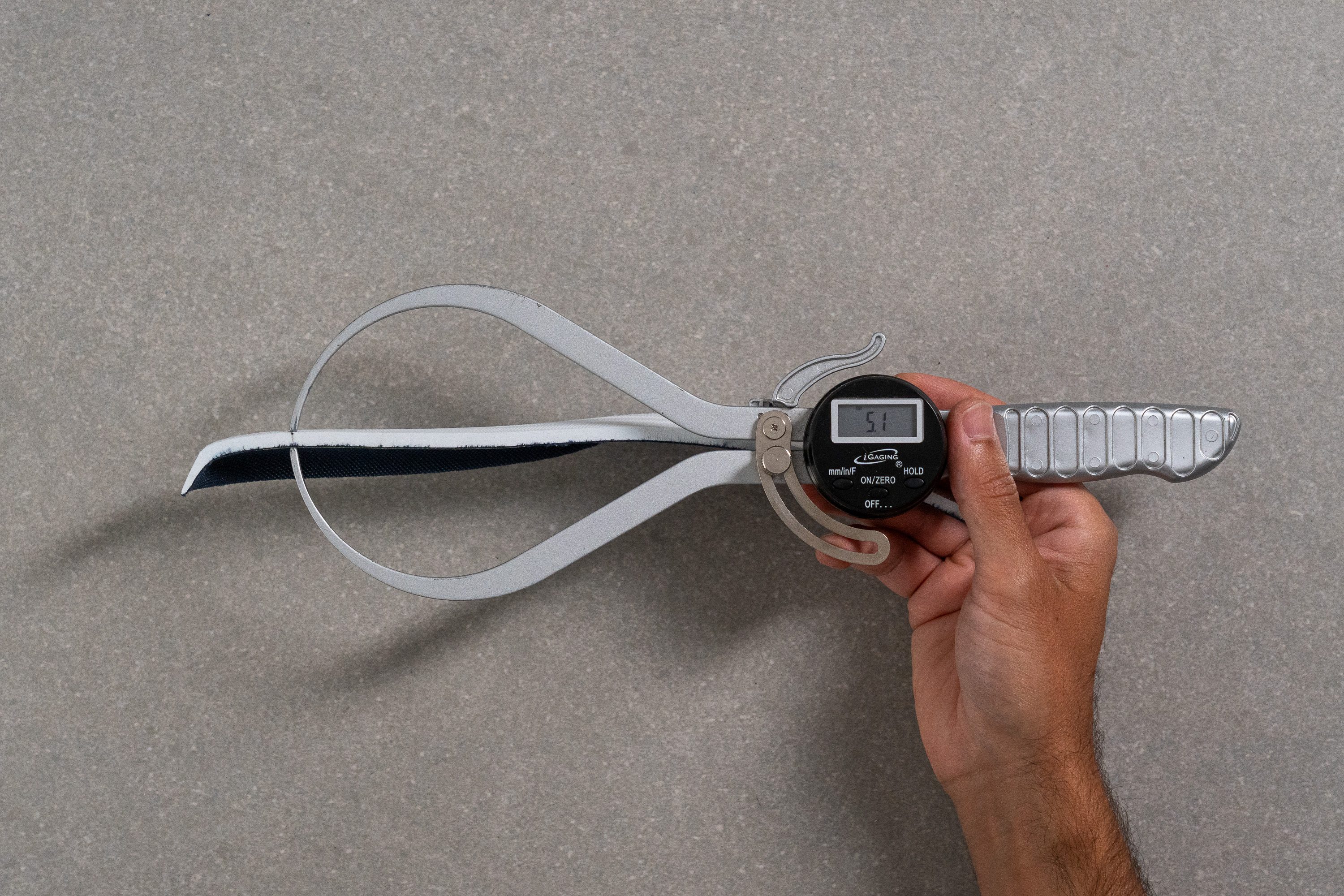
| Hoka Skyflow | 5.1 mm |
| Average | 4.5 mm |
Removable insole
You can easily swap out the removable insole of the Skyflow for custom orthotics or higher-quality insoles from other shoes to boost comfort.
If you look closely at the picture, you’ll also notice that Hoka has incorporated a perforated strobel board—a nice addition to enhance ventilation. However, it would have been even better if they had paired it with a perforated insole.
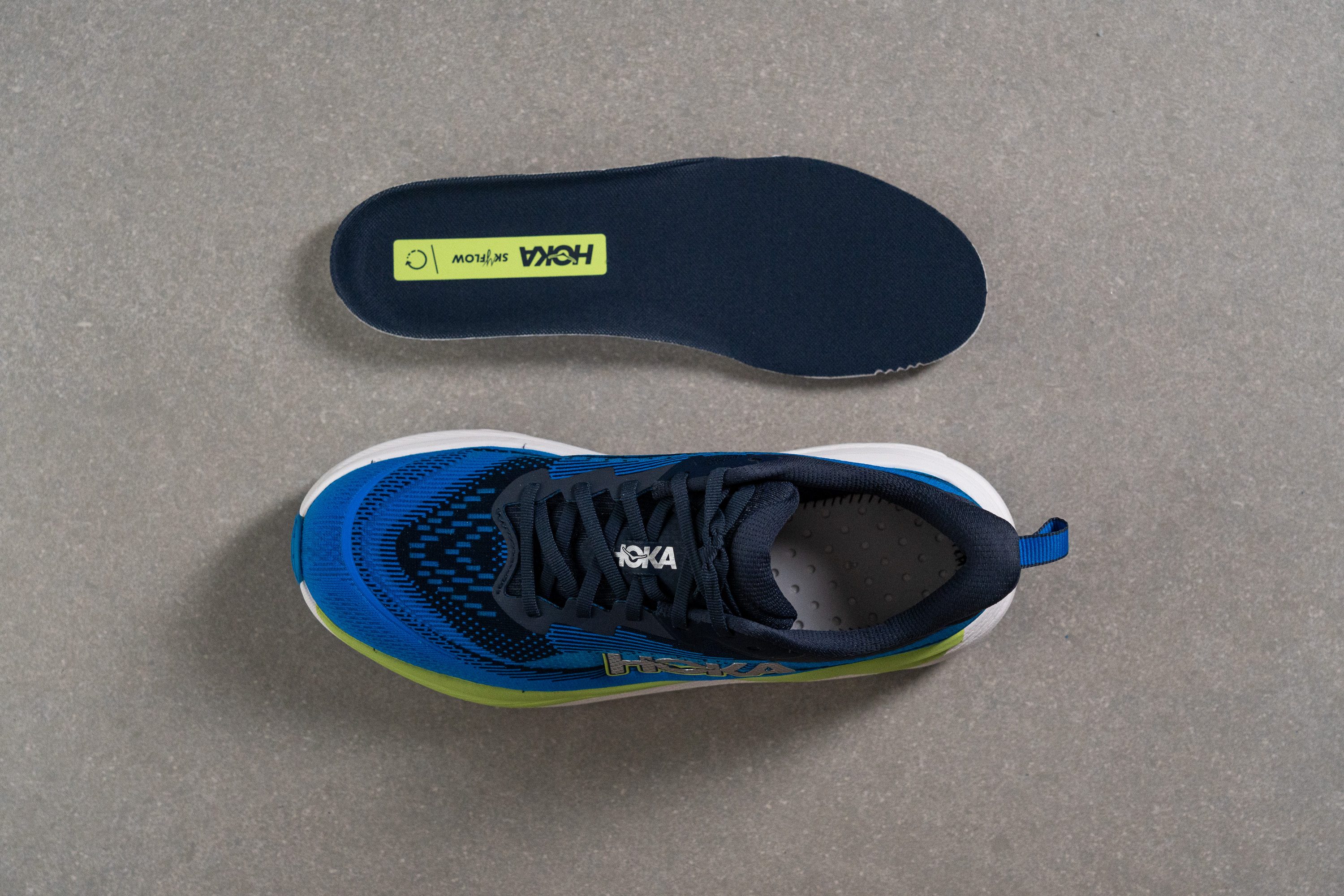
| Hoka Skyflow | Yes |
Midsole softness in cold (%)
As we said before, the midsole is crafted from EVA, so it inherently struggles in cold temperatures. Nevertheless, our tests revealed this EVA variant stiffens less dramatically compared to others, showing only a 25.1% uptick after 20 minutes in our freezer, which is a decent outcome.

| Hoka Skyflow | 25% |
| Average | 24% |
Reflective elements
Hoka usually adds reflective elements to its running shoes, and we truly appreciate this commitment, as it carry no downsides and significantly enhance safety at night.
In the Skyflow, we were thrilled to see that they raised the bar for daily running shoes by incorporating 360-degree reflectivity!
| Hoka Skyflow | Yes |
Tongue padding
During our review, we discovered that the Skyflow prioritizes comfort over weight reduction, with the tongue serving as a perfect example. Instead of adopting the ultra-thin 1.5 mm tongue from the Mach 6, Hoka opted for a plush, luxurious 9.6 mm tongue with three layers of foam.

We also loved the effective lockdown achieved by the simple lacing system. It features punched eyelets and offering the option to secure a runner’s knot if necessary. And that's all we want in a daily trainer.
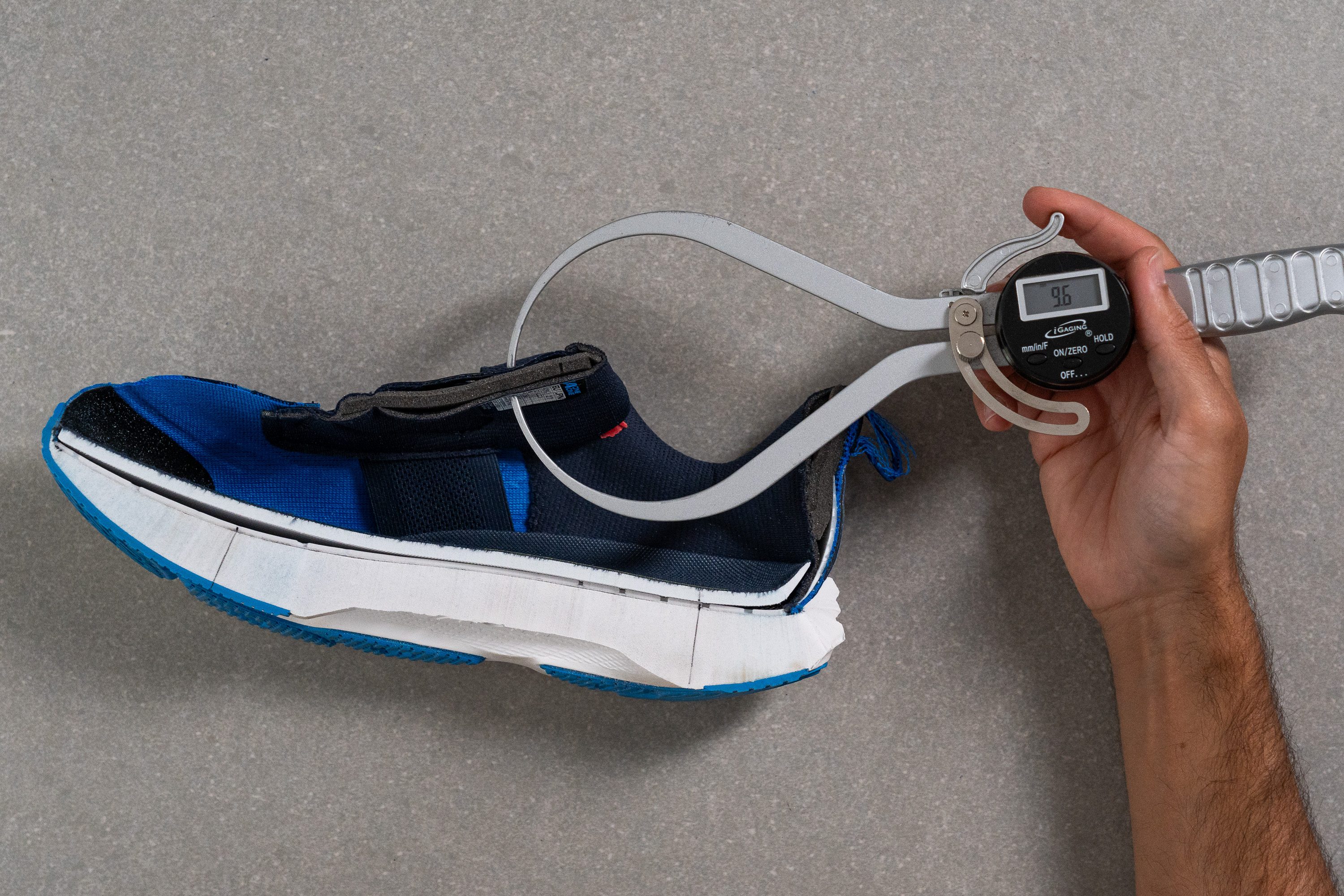
| Hoka Skyflow | 9.6 mm |
| Average | 5.8 mm |
Tongue: gusset type
In our evaluation, we also found that the tongue of the shoe is semi-gusseted and equipped with an excellent, breathable elastic strap on each side.
Here in the lab, we really appreciate these subtle touches—the ones that often go unnoticed. Although it would have been more cost-effective to use a non-perforated fabric, Hoka opted to spend a bit more here, and we're glad they did.
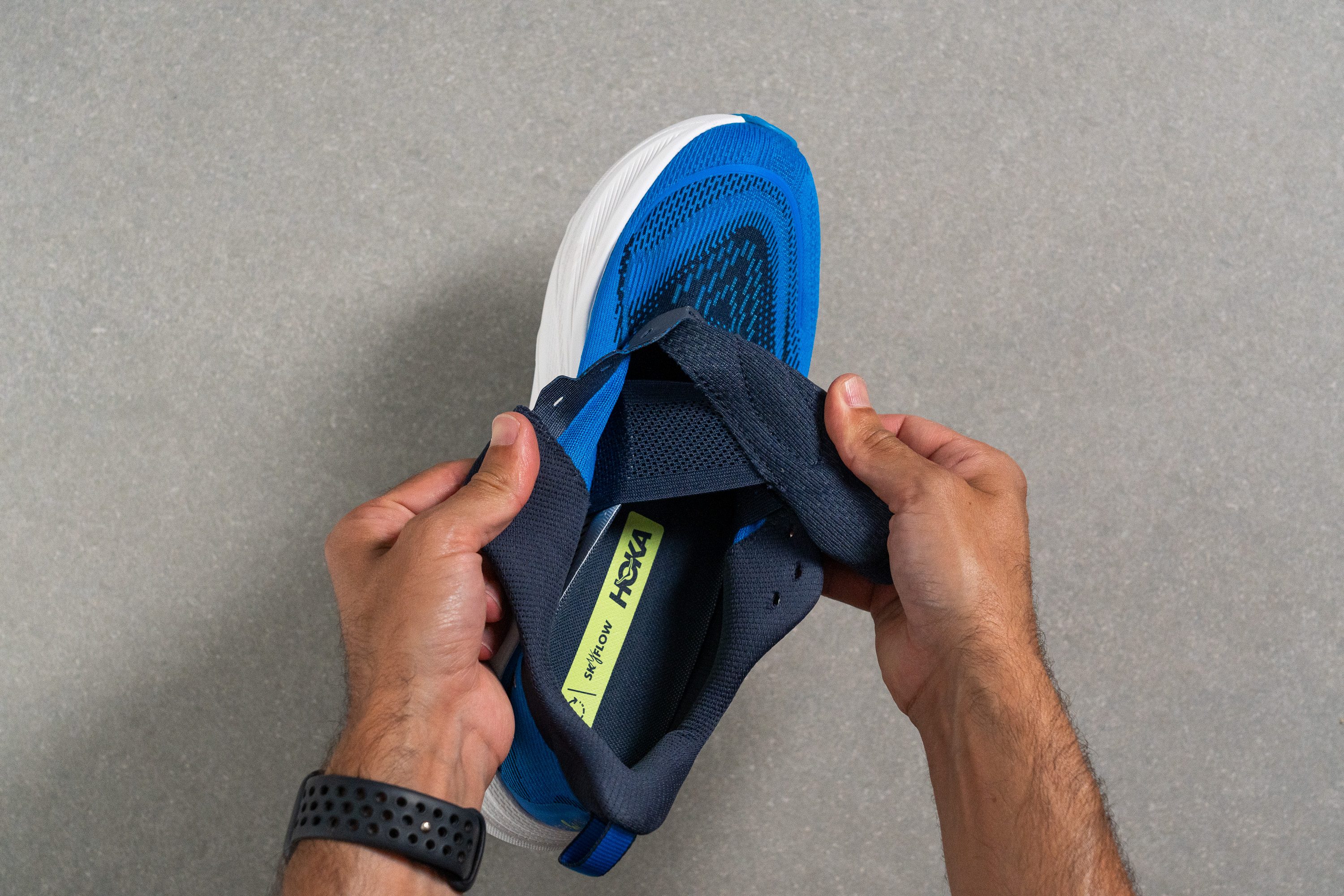
| Hoka Skyflow | Both sides (semi) |
Heel tab
While some recent Hoka designs have omitted the heel tab, the Skyflow includes one. We believe this non-essential feature marks the Skyflow as a pricier model within Hoka's lineup, highlighting its position among the higher-end trainers.

| Hoka Skyflow | Finger loop |

